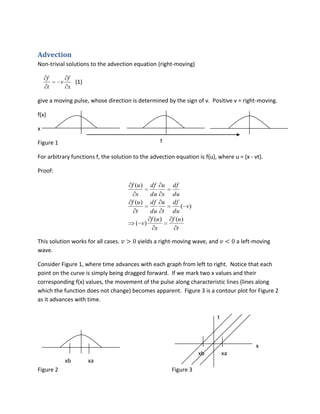This document summarizes several numerical methods for solving the advection and wave equations, including:
1) FTCS (Forward Time Centered Space), which is unconditionally unstable. Lax and Lax-Wendroff add diffusion terms to stabilize FTCS.
2) CTCS (Centered Time Centered Space), which is conditionally stable for Courant numbers ≤ 1.
3) Upwinding and Beam-Warming methods, which use points trailing the wave to ensure stability for large Courant numbers.
4) The Box method, which is stable for any Courant number by using points at multiple time levels.
Boundary conditions for the wave equation



















